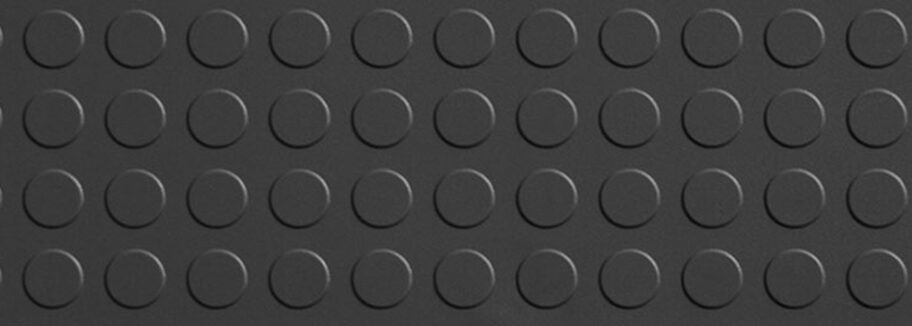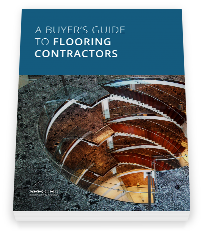Rubber Flooring: The Ins and Outs
From hospitals and schools to gyms and commercial kitchens, rubber flooring provides a unique and versatile approach to commercial flooring. Rubber is an ideal solution for areas that face heavy foot traffic and can also be a cushioning agent that reduces fatigue and foot injury. To better determine whether rubber is the correct solution for your facility, let’s examine what exactly rubber flooring is, the pros and cons of rubber flooring, the installation methods that go along with it, and how to keep it clean.

What is Rubber Flooring?
Rubber flooring is simply a flooring solution designed to protect. It is made from recycled materials such as tires, sports equipment, and even shoes. It can also be produced through the extraction of natural rubber from the ‘Amazonian rubber tree’ also known as Hevea brasiliensis.
Pros and Cons of Rubber Flooring
Pros
- Recyclable
- Versatility
- Highly durable
- Dimensionally stable
- Easy to maintain
- Homogeneous construction
- Stain, mold, and mildew resistant
- Naturally resistant to water
- Slip-resistant
- Fire retardant
- Comfortable – Easy on back and feet
- Sound absorbent and static resistant
Cons
- Longer Installation times compared to other materials
- Post-installation rubbery smell that could hang around for a couple of weeks.
- Can be slippery when wet if left untreated
- Can be more costly than other options

A buyer’s guide to contract flooring
How to get the greatest value for your floor and select the right contractor for your project.
Rubber Flooring Installation
As you can see, rubber flooring is extremely versatile and can be used in a wide variety of commercial settings. However, it is imperative that you select the best application for your facility to achieve the greatest investment for your budget. Commercial rubber flooring can be installed in one of the following three options:
Rubber Floor Rolls
The installation of rubber floor rolls can be compared to that of traditional rolls of broadloom carpeting. Both can be installed directly over an existing subfloor using either tape or glue adhesives.
Rubber Floor Tiles
Rubber floor tiles are best suited for commercial facilities that would like to implement a floating floor. This is because these tiles are designed to be interlocked and loosely laid, and without the need of adhesives or double-sided tape.
Rubber Floor Mats
If you want to cover a large space without installing a permanent solution, consider rubber floor mats. These mats can be used at entrances to prevent slips and falls, as well as helping to preserve the longevity of your flooring.
How to Clean Rubber Floors?
Maintenance protects your investment, plain and simple. As any facility manager knows, renovations are expensive. And proper maintenance pays dividends when compared to ripping and replacing every five years.
Flooring is no exception. Your floor endures foot traffic, spills, and the weight of equipment and furniture on a daily basis. You need to have a flooring maintenance plan in place to extend the life of the flooring system and keep the manufacturer’s warranty intact.
When it comes to rubber flooring, maintenance couldn’t be easier. In fact, rubber is so easy to clean that no harsh chemicals or detergents are needed. Simply sweep or vacuum away dust and debris and then mop any areas of residue that cling to the surface. From there, let your floor air dry and wipe any remaining liquid that may still be present.
Request a flooring product care consultation
Let’s talk about your facility’s flooring maintenance needs — and how a detailed product care plan can extend the lifetime of your flooring investment.
